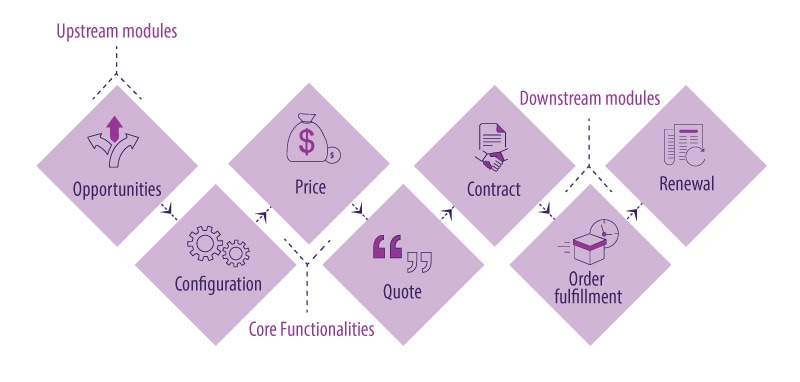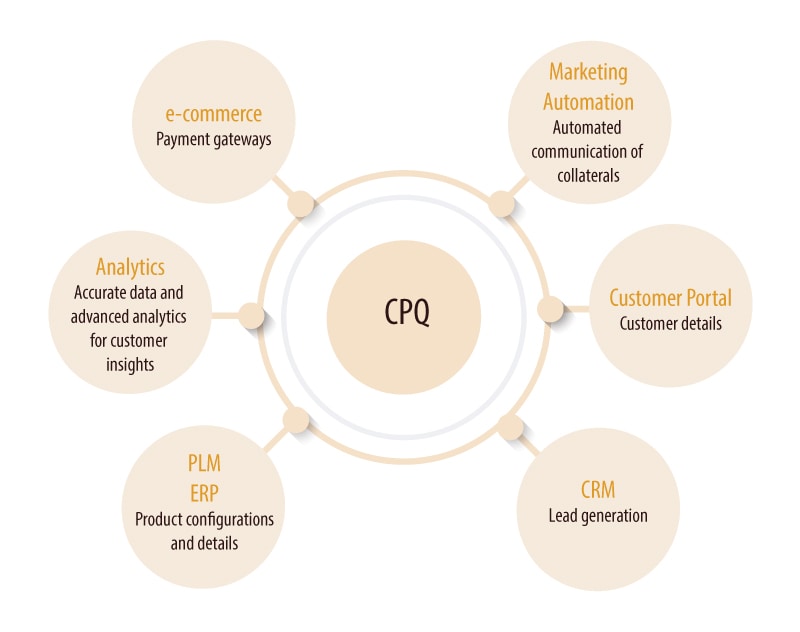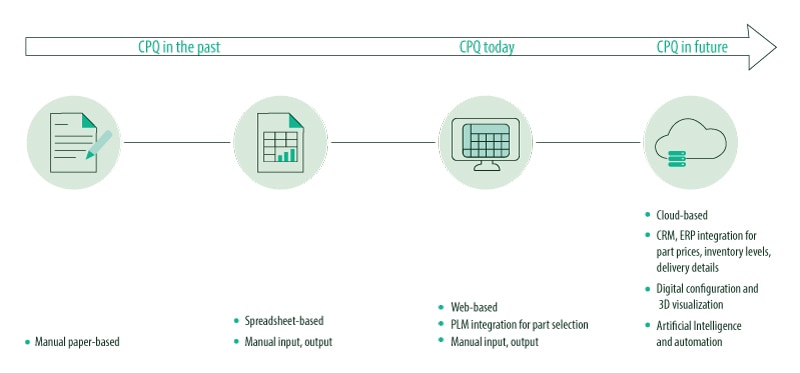CPQ in the digital age
Configure, Price, Quote is a tool or system used to help product manufacturers set prices for complex products. CPQ systems take into account the multiple combinations of components, features and service packages that underlie a finished product. The tool combines this with information about the customer and context, recommends a price, and finally produces a quote and the associated contractual documents that can be shared with a potential or existing customer.
But in reality, this complex process is often managed in spreadsheets, manually configured by sales people and disconnected from data about the customer or up-to-date product information from the rest of the enterprise. This causes inaccuracies and delays, leading to lost opportunities and unprofitable sales.
The challenge is only going to get worse as the number and complexity of data sources grow. At the heart of this growth is the increased direct engagement with customers through digital channels. Today more customers conduct research and buy configurable products online, with little or no interaction with a salesperson. Configuration options are now shared and chosen digitally and need to be captured and fed into CPQ systems, returning prices in real-time.
Indeed, leading manufacturers are starting to experiment with even more cutting-edge digital tools to engage customers in the configuration and customization of products. For example, in automotive, both Jaguar Land Rover1 and BMW2 have begun to use augmented and virtual reality in their showrooms to recreate 3D views of a car model. With this, customers can see how their choice of features — colors, upholstery, interiors, infotainment systems and so on — would look like in the finished product.
Similarly, in home furnishings, Amazon3 and IKEA use visual product configurators to enable customers to select combinations of furniture, placing them in a virtual living room, before deciding what to purchase.
Integration of these new customer experience platforms into CPQ enables product manufacturers to both engage and delight the customer by providing prices, delivery times, service plans and contracts in real-time. Clearly, this integration provides a competitive edge. But it goes beyond this. Better integration of CPQ with enterprise systems also can turn the tool into a revenue growth platform by reducing revenue leakage and identifying new sales opportunities from existing customers.
CPQ’s potential for revenue growth
Manufacturers have used CPQ tools since the early 1980s. Originally paper-based, and then in spreadsheets, CPQ’s role has been to perform complex calculations across the numerous subsystems and parts that comprise the creation of a complex manufactured product in order to calculate profit margins and, finally, generate a quote.
CPQ is a core part of the sales process for complex manufactured goods. It can be used to price both physical products and services, such as maintenance and warranties. Typically, it prices both of these in combination, further increasing the complexity.
The CPQ process begins with the identification of a sales opportunity (see Figure 1) and then leads to a creation of a contract. All this is usually managed by a sales team and works in a linear fashion.
Figure 1. CPQ’s position in the sales process

Source: Infosys
To meet its full potential, however, CPQ can be integrated with other enterprise systems to better originate and identify new sales opportunities — boosting its use as a revenue growth platform. For example, the CRM system can share details of potential customers from the past who can be proactively approached with new products. Promotional campaigns can be automatically created, customized and targeted at prospects.
Infosys has done just this for a leading automobile manufacturer by integrating its CPQ tool with the company’s CRM. This integration enabled the marketing automation system to send targeted messages on a large scale across multiple channels.
After the marketing automation system triggered a campaign, it sent an offer email directly to the customer. If the customer chose to opt for more details regarding product pricing and discounts, a landing page on the CPQ system showed the details. CPQ then created an optimum quote for that particular customer and stored it in the CRM system. It passed on the details to the sales team for lead nurturing. Seamlessly, customers benefited from the promotional offer quickly and transparently, without direct human effort on the company side. Customers could further book the test date for a vehicle drive at their preferred dealer location.
The role of CPQ does not stop with the sale of new products. It continues after the sales too. For example, another Infosys client in the agricultural equipment space was losing opportunities to renew aftersales contracts; clients were not being notified or sent proposals to renew contracts that were about to expire.
In this solution, the CPQ system sent alerts and notifications through the user customer portal for services due for renewal within the next 30 days. These alerts and notifications were action oriented: customer preferences were captured in the CRM system, and a preconfigured quote was sent to each customer.
Integrating CPQ across the enterprise
To achieve its full potential as a holistic tool that supports better customer experience and revenue growth, CPQ needs to not only analyze data on the costs of components but also analyze and process data on customer interactions. This requires integration into a whole host of different enterprise systems (see Figure 2).
Product lifecycle management (PLM), along with product configurator tools, are the traditional data inputs for CPQ systems. They provide a cost estimate for CPQ by rolling up individual costs of parts into the final finished good using the bill of material.
In next-generation CPQ, however, the tool needs to be integrated with CRM, marketing automation, customer portals, e-commerce and customer analytics tools in order to identify — and act on — new sales as well as new upsell and cross-sell opportunities.
Figure 2. Integrating CPQ with customer-focused systems

Source: Infosys
Next-generation CPQ building blocks
While integration with other enterprise systems will provide a solid platform for the next generation, it is not the only step. There are several building blocks that also need to be in place. Figure 3 shows how we see the evolution of CPQ moving away from manual operation on independent proprietary systems, toward an architecture built on cloud, integrated with CRM and ERP, and using automation and visualization tools.
Migrating to a cloud-based CPQ tool enables more agile development and deployment of the system. Specific modules and features can be added or removed in a plug-and-play fashion. Usage can also be charged on a utility basis.
Product visualization tools, particularly 2D and 3D configuration capability, are key for enhanced customer engagement and higher-quality configuration support. Customers can literally see different aspects of the product as they want to configure it. They can visualize how it will work in their environment under different scenarios. These techniques can improve the likelihood of customers being confident in what they purchase — whether it’s a car, a sofa or a turbine.
The real revolutionary step will be in the adoption of artificial intelligence and machine learning techniques. In the initial stages, these can be used to perform pattern matching on existing data to identify combinations of factors, such as price, product configuration, and customer demographics and history to identify new sales opportunities and fine-tune quotes. But as more digital interaction tools such as AR/VR are adopted as part of the sales process, then companies can start interpreting customer sentiment through facial recognition or even biometric tracking to configure and price new bespoke products.
The more data that a well-designed CPQ can ingest, the more focused it can become in customer engagement. For CPQ to work optimally, businesses need to plan for it as an integral part of their core digital strategies, on both the customer engagement and the product design sides.
Figure 3. The evolution of CPQ tools

Source: Infosys





